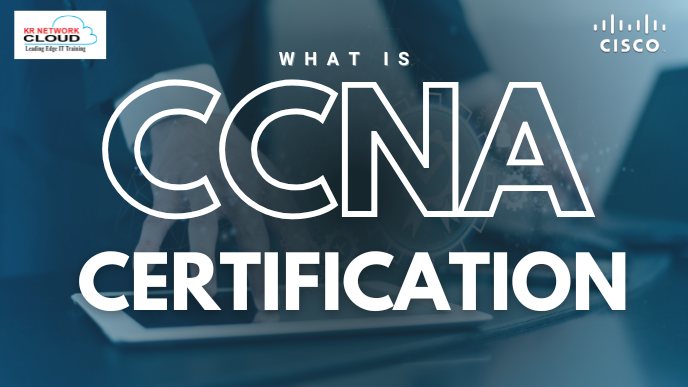Red Hat Ceph Training: Your Guide to Mastering Ceph Storage

- KR NETWORK CLOUD
- August 6, 2025
In the rapidly evolving world of enterprise IT, managing vast amounts of data efficiently is a top priority. Red Hat Ceph Storage is a leading software-defined storage platform that meets these demands, offering scalable, cost-effective solutions for modern cloud environments. To harness its full potential, Red Hat Ceph training is essential for IT professionals, from storage administrators to cloud operators. This article explores why Red Hat Ceph training is critical, how the CL260 course and EX260 exam pave the way to Red Hat Ceph certification, and why Ceph training courses are a game-changer for your career.
What Is Red Hat Ceph Training?
Red Hat Ceph training equips IT professionals with the skills to deploy, manage, and optimize Red Hat Ceph Storage, an open-source platform that supports block, object, and file storage. Designed for scalability and flexibility, Ceph integrates seamlessly with Red Hat OpenStack Platform and OpenShift Container Platform, making it ideal for hybrid cloud environments. Through Red Hat Ceph training, you’ll learn to handle data-intensive workloads like AI, analytics, and containerized applications.
Why Choose Red Hat Ceph Training?
Hands-On Expertise: Gain practical experience with Ceph cluster deployment and management.
Career Advancement: Earn a Red Hat Ceph certification to stand out in roles like cloud architect or storage engineer.
Cloud Integration: Master integration with Red Hat OpenStack and OpenShift for modern applications.
Flexible Learning Options: Choose between instructor-led CL260 courses or self-paced Ceph online courses.
Red Hat Ceph training is your gateway to mastering a platform that powers enterprise-grade storage solutions.
The Power of Red Hat Ceph Storage
Red Hat Ceph Storage is a software-defined storage solution that runs on commodity hardware, eliminating the need for expensive proprietary systems. Its key features include:
Unified Storage: Supports block (RADOS Block Device), object (RADOS Gateway with S3/Swift compatibility), and file (CephFS) storage.
Scalability: Scales to petabytes of data, handling billions of objects effortlessly.
Fault Tolerance: Ensures high availability through replication and erasure coding.
Cost Efficiency: Reduces total cost of ownership with open-source technology and Red Hat’s enterprise support.
By enrolling in Red Hat Ceph training, you’ll learn to leverage these features to meet enterprise storage demands.
Diving into the Red Hat CL260 Course
The Cloud Storage with Red Hat Ceph Storage (CL260) course is the cornerstone of Red Hat Ceph training. Based on Red Hat Ceph Storage 5.0, this four-to-five-day program offers hands-on labs and 45 days of extended lab access. It’s designed for professionals deploying Ceph in production environments, such as data centers or Red Hat OpenStack and OpenShift infrastructures.
What You’ll Learn in CL260
Ceph Architecture: Understand data distribution, client access, and cluster management.
Cluster Deployment: Deploy and scale Red Hat Ceph Storage clusters on commodity servers.
Storage Configuration: Set up block, object, and file storage with RADOS, RBD, and CephFS.
Performance Tuning: Optimize cluster performance and troubleshoot issues.
Cloud Integration: Connect Ceph with Red Hat OpenStack and OpenShift.
The CL260 course is ideal for storage administrators, cloud operators, and developers. While Red Hat Certified System Administrator (RHCSA) knowledge is recommended, a free skills assessment can confirm your readiness. Completing CL260 prepares you for the EX260 exam and real-world Ceph management.
Earning Red Hat Ceph Certification with EX260
The Red Hat Certified Specialist in Ceph Cloud Storage (EX260) exam is a performance-based test that validates your ability to manage Red Hat Ceph Storage clusters. Passing this exam earns you the prestigious Red Hat Ceph certification, a credential that counts toward the Red Hat Certified Architect (RHCA) designation.
EX260 Exam Objectives
Deploy and configure Ceph clusters using Ansible automation.
Manage storage pools, OSDs, and CRUSH maps for optimal data placement.
Configure block, object, and file storage for client access.
Monitor, troubleshoot, and optimize Ceph performance.
Integrate Ceph with Red Hat OpenStack and OpenShift.
Exploring Ceph Training Courses
With the growing demand for Red Hat Ceph Storage expertise, a variety of Ceph training courses cater to different learning preferences:
Instructor-Led CL260: Offered by Red Hat or partners like Fast Lane, ideal for hands-on learners.
Ceph Online Courses: Self-paced programs from New Horizons or LearnQuest for flexible learning.
EX260 Prep Programs: Focused courses from WebAsha or Koenig Solutions with mock tests and expert guidance.
When choosing a course, ensure it aligns with Red Hat Ceph Storage 5.0 and covers EX260 objectives. Note that older courses like CEPH125 and EX125 are outdated, as CL260 and EX260 focus on modern technologies like ceph-volume and BlueStore.
Tips for Success in Red Hat Ceph Training
To excel in Red Hat Ceph training and achieve Red Hat Ceph certification, follow these tips:
Build a Strong Foundation: Ensure familiarity with Linux and storage administration, ideally with RHCSA knowledge.
Practice Extensively: Use CL260’s 45-day lab access to experiment with Ceph clusters.
Review Exam Objectives: Study EX260 objectives on Red Hat’s website for focused preparation.
Leverage Resources: Explore Red Hat documentation, community forums, and third-party study guides.
Join a Community: Connect with certified professionals on platforms like LinkedIn for insights and support.
Why Red Hat Ceph Training Is Essential
Red Hat Ceph training empowers IT professionals to manage enterprise storage with confidence. By mastering Red Hat Ceph Storage, you can:
Deploy scalable storage for cloud-native applications.
Reduce costs with commodity hardware and open-source technology.
Ensure high availability for mission-critical workloads.
Enhance career prospects with Red Hat Ceph certification.
As enterprises increasingly adopt Red Hat Ceph Storage for AI, analytics, and cloud environments, professionals with Red Hat Ceph training are in high demand.
Conclusion
Red Hat Ceph training is your key to mastering Red Hat Ceph Storage, a powerful platform for modern enterprise storage. Through the CL260 course and EX260 exam, you can earn a Red Hat Ceph certification that validates your expertise and opens doors to exciting career opportunities. Whether you choose instructor-led training or Ceph online courses, investing in Red Hat Ceph training equips you to tackle the challenges of cloud-scale storage.
Ready to start? Enroll in a Red Hat CL260 course or explore Ceph online courses to build your skills. . Begin your journey to becoming a Red Hat Certified Specialist in Ceph Cloud Storage today!
Watch Now: Click Here
FAQ
1. What is Red Hat Ceph Training?
Answer: Red Hat Ceph training is a specialized program designed to teach IT professionals how to deploy, manage, and optimize Red Hat Ceph Storage, an open-source, software-defined storage platform. Courses like Cloud Storage with Red Hat Ceph Storage (CL260) provide hands-on experience with Ceph clusters, preparing you for tasks like configuring block, object, and file storage, and integrating with Red Hat OpenStack and OpenShift. Training is available in instructor-led or Ceph online course formats.
2. What is Red Hat Ceph Storage?
Answer: Red Hat Ceph Storage is an open-source, software-defined storage solution that supports block, object, and file storage on commodity hardware. It’s designed for scalability, fault tolerance, and cost efficiency, making it ideal for enterprise cloud environments, including integration with Red Hat OpenStack Platform and OpenShift Container Platform. It’s widely used for data-intensive workloads like AI, analytics, and hybrid cloud applications.
3. Who should take Red Hat Ceph Training?
Answer: Red Hat Ceph training is ideal for storage administrators, cloud operators, DevOps engineers, and developers who manage or deploy storage solutions in enterprise environments. It’s particularly valuable for those working with Red Hat OpenStack, OpenShift, or Kubernetes. Familiarity with Linux administration, such as Red Hat Certified System Administrator (RHCSA) knowledge, is recommended but not mandatory.
4. What is the CL260 course?
Answer: The CL260 course, Cloud Storage with Red Hat Ceph Storage, is a four-to-five-day training program based on Red Hat Ceph Storage 5.0. It covers Ceph architecture, cluster deployment, storage configuration (block, object, file), performance tuning, and integration with Red Hat OpenStack and OpenShift. It includes 45 days of lab access for hands-on practice and prepares you for the EX260 exam.
5. What is the EX260 exam?
Answer: The Red Hat Certified Specialist in Ceph Cloud Storage (EX260) exam is a performance-based test that evaluates your ability to deploy, configure, and manage Red Hat Ceph Storage clusters. It covers tasks like setting up storage pools, managing OSDs, configuring storage types, and troubleshooting performance. Passing the EX260 earns you the Red Hat Ceph certification, a credential toward the Red Hat Certified Architect (RHCA) designation.
6. What are the prerequisites for Red Hat Ceph Training and the EX260 exam?
Answer: While there are no strict prerequisites, Red Hat recommends having Red Hat Certified System Administrator (RHCSA) certification or equivalent Linux administration experience. A free skills assessment on Red Hat’s website can help determine your readiness for the CL260 course and EX260 exam. Familiarity with storage concepts and cloud environments is also beneficial.
7. How does Red Hat Ceph Training prepare me for the EX260 exam?
Answer: The CL260 course provides comprehensive, hands-on training in Red Hat Ceph Storage management, covering all EX260 exam objectives. You’ll practice deploying clusters, configuring storage, optimizing performance, and integrating with Red Hat OpenStack and OpenShift. The course’s 45-day lab access allows you to experiment with real-world scenarios, ensuring you’re well-prepared for the performance-based EX260 exam.
8. What are Ceph Online Courses?
Answer: Ceph online courses are self-paced training programs offered by Red Hat or partners like New Horizons, LearnQuest, or WebAsha. These courses cover Red Hat Ceph Storage fundamentals, CL260 content, and EX260 exam preparation, allowing you to learn at your own pace. They’re ideal for busy professionals seeking flexibility while mastering Red Hat Ceph training.
9. How long does it take to complete Red Hat Ceph Training?
Answer: The CL260 course typically takes four to five days for instructor-led training, with 45 days of extended lab access for practice. Ceph online courses vary in duration, depending on your pace, typically ranging from 20 to 40 hours. Preparation for the EX260 exam may take additional time, depending on your prior experience and study habits.
10. What is the Red Hat Ceph Certification?
Answer: The Red Hat Ceph certification, officially the Red Hat Certified Specialist in Ceph Cloud Storage, is earned by passing the EX260 exam. It validates your ability to deploy and manage Red Hat Ceph Storage clusters and counts toward the Red Hat Certified Architect (RHCA) designation. This certification enhances your credibility in roles like storage administrator or cloud engineer.






